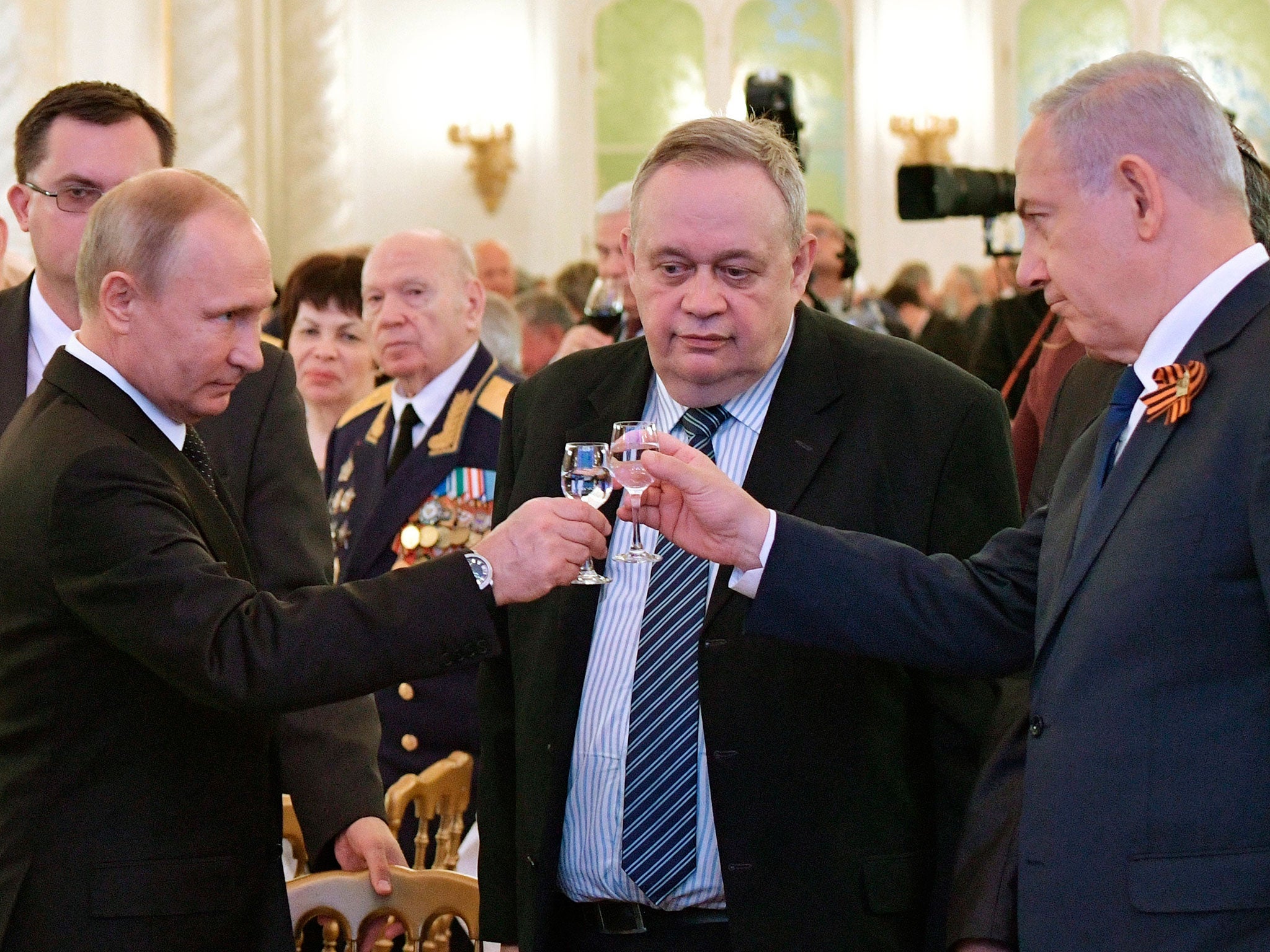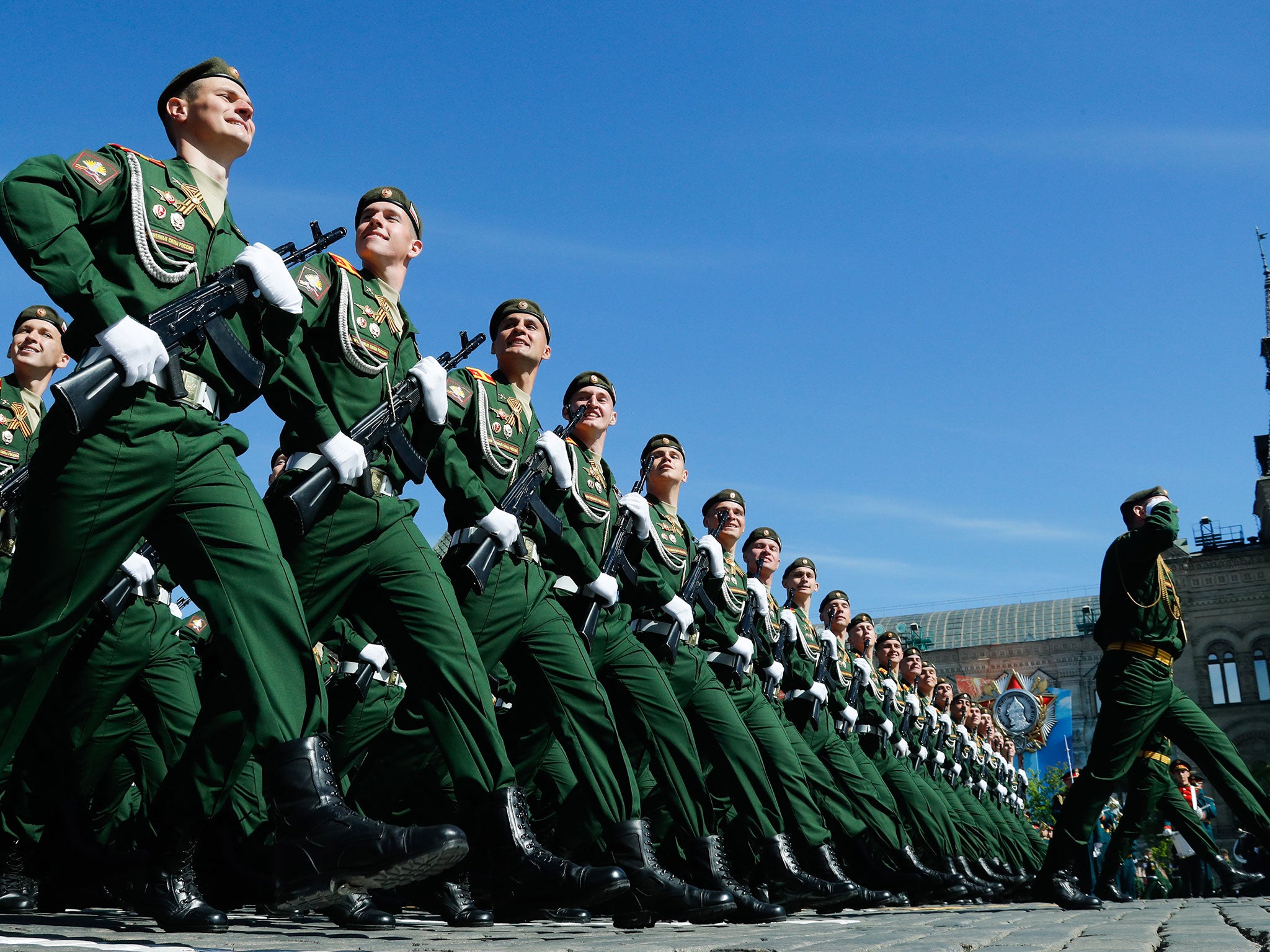Defiant Russia showcases new weapons in Victory Day parade
Moscow debuts new hypersonic missile systems, drones, robotic fighting vehicles and stealth fighter jets
Your support helps us to tell the story
From reproductive rights to climate change to Big Tech, The Independent is on the ground when the story is developing. Whether it's investigating the financials of Elon Musk's pro-Trump PAC or producing our latest documentary, 'The A Word', which shines a light on the American women fighting for reproductive rights, we know how important it is to parse out the facts from the messaging.
At such a critical moment in US history, we need reporters on the ground. Your donation allows us to keep sending journalists to speak to both sides of the story.
The Independent is trusted by Americans across the entire political spectrum. And unlike many other quality news outlets, we choose not to lock Americans out of our reporting and analysis with paywalls. We believe quality journalism should be available to everyone, paid for by those who can afford it.
Your support makes all the difference.Columns of tanks, nuclear missile launchers, new drones and robotic fighting vehicles trundled through Moscow’s Red Square on Wednesday in Russia’s annual Victory Day celebration.
The parade marked the 73rd anniversary of the end of the Second World War – a war that saw the Soviet Union lose more than 20 million people.
President Vladimir Putin stood with his back to Lenin’s preserved remains, flanked by Benjamin Netanyahu, the Israeli prime minister. In a short speech heavy on geopolitics, Mr Putin claimed the historical victory and issued a warning to contemporary foes.
“The Soviet Union determined the outcome of that war, saving millions,” he said. “Some people are currently trying to rewrite and distort history – and will never allow them to do that.”

The independent pollsters Levada Centre say Mr Putin was with his people on this point. Their research suggests as many as 68 per cent of Russians believe the country would have beaten Hitler without assistance from allies.
First organised by Stalin in 1945, the parade has traditionally a dual purpose of honouring veterans and projecting military resolve. But as the numbers of surviving veterans fall, the day has slowly swung towards the needs of the state.
“There’s only about 10,000 left of us in Moscow,” said Boris Davidov, 90, who was just 15 when he joined the navy in 1943.
“Many of us now feel forgotten and are not even invited to military functions anymore. We get double pensions, but we still live crappily, as they say.”
Over the years, Mr Putin has gradually made Victory Day the major event on the state calendar. In 2007, he authorised the reintroduction of tanks and missile launchers into the show. They had been withdrawn in the 1990s for image and practical reasons – they were ruining the stone of Red Square. Today, they took pride of place in the procession.
Aside from the usual hits – tanks, fighting vehicles and missile launchers – there were several new machines on show. New drone complexes, some painted in Arctic camouflage colours, added a convenient postscript to Mr Putin’s pugnacious prelude.
New “Terminator” fighting vehicles and updates to the Armata and T-72 tank series also roared across the cobbles.

But the main novelties on show were in the air.
First came the new Su-57 stealth fighter, a fifth-generation aircraft capable of flying at 1,500mph, and designed as a competitor to the US’s F-22 Raptor.
Then came the strategic bombers, and MiG-31 fighter jets, equipped with the Kinzhal missile system. This is a new hypersonic weapon first revealed by Mr Putin in his March state-of-the-nation address. Some have suggested that it is not quite yet battle ready, but few will want to test that assumption.
The new releases came off the back of massive increases in military spending since 2012. While the ongoing sanctions regime and a stagnant economy meant last year there were cuts in military spending for the first time in two decades, the results of Russia’s investment are already substantial.
This was no doubt one of the reasons why the Israeli prime minister was one of only two foreign heads of state to attend the show.
It was his second visit to Moscow this year, but there was an urgency to this visit. By his own admission, Mr Netanyahu was in town to use Moscow’s leverage to block Iranian military buildup in southern Syria.
This, he has suggested, posed an existential threat to Israel, and was “the major threat in the Middle East”.
Some in Moscow have suggested the timing of his visit, a day after US President Donald Trump signalled his intention to withdraw from the Iran nuclear deal, was not coincidental.
The leaders of Israel and Russia are due to hold talks later today.

Join our commenting forum
Join thought-provoking conversations, follow other Independent readers and see their replies
Comments